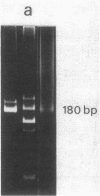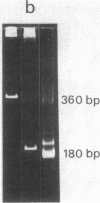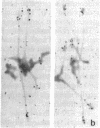Abstract
A highly repeated DNA sequence has been isolated from the maize genome as a satellite in actinomycin D/CsCl gradients. By using maize stocks differing in their heterochromatin content we have established that the sequence is a major constituent of one class of heterochromatin, knob heterochromatin, which can occur at 23 locations in the chromosome complement. The repeating unit, of 185 base pairs, has been cloned in plasmid pBR322 and its nucleotide sequence has been determined. The presence of this DNA sequence in knob heterochromatin and its absence from centromeric, nucleolar, and B chromosome heterochromatin parallels the cytogenetic differentiation previously described for these classes of heterochromatin in maize. Because knob heterochromatin has a distinctive cytological appearance and is unique in showing neocentric activity at meiosis, its association with a particular repeated DNA sequence may reflect a functional role for the sequence in the cell cycle.
Keywords: satellite DNA, cloning, in situ hybridization
Full text
PDF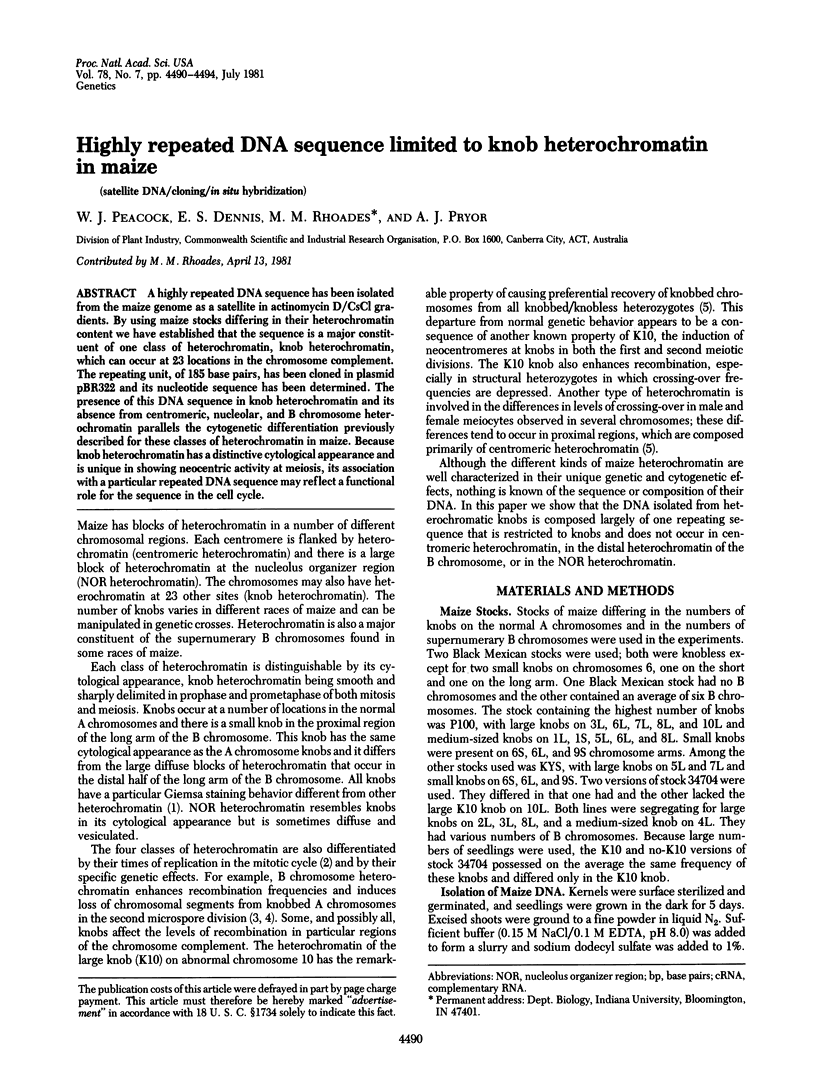
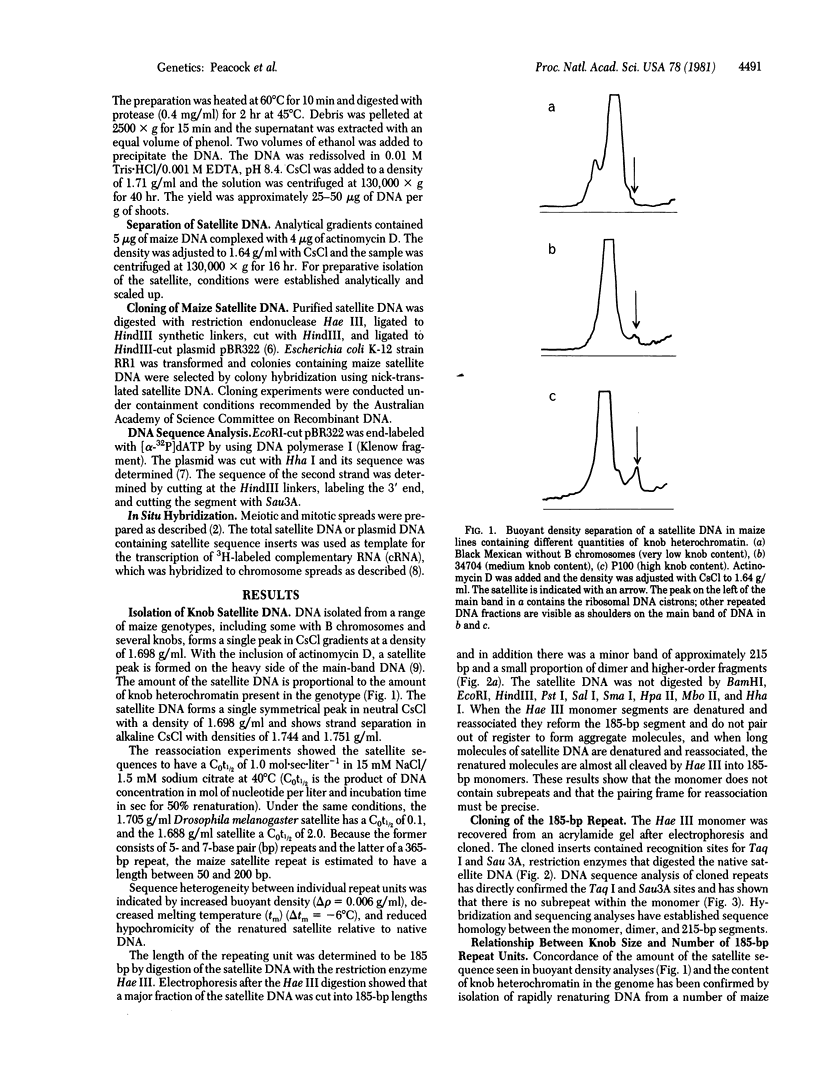
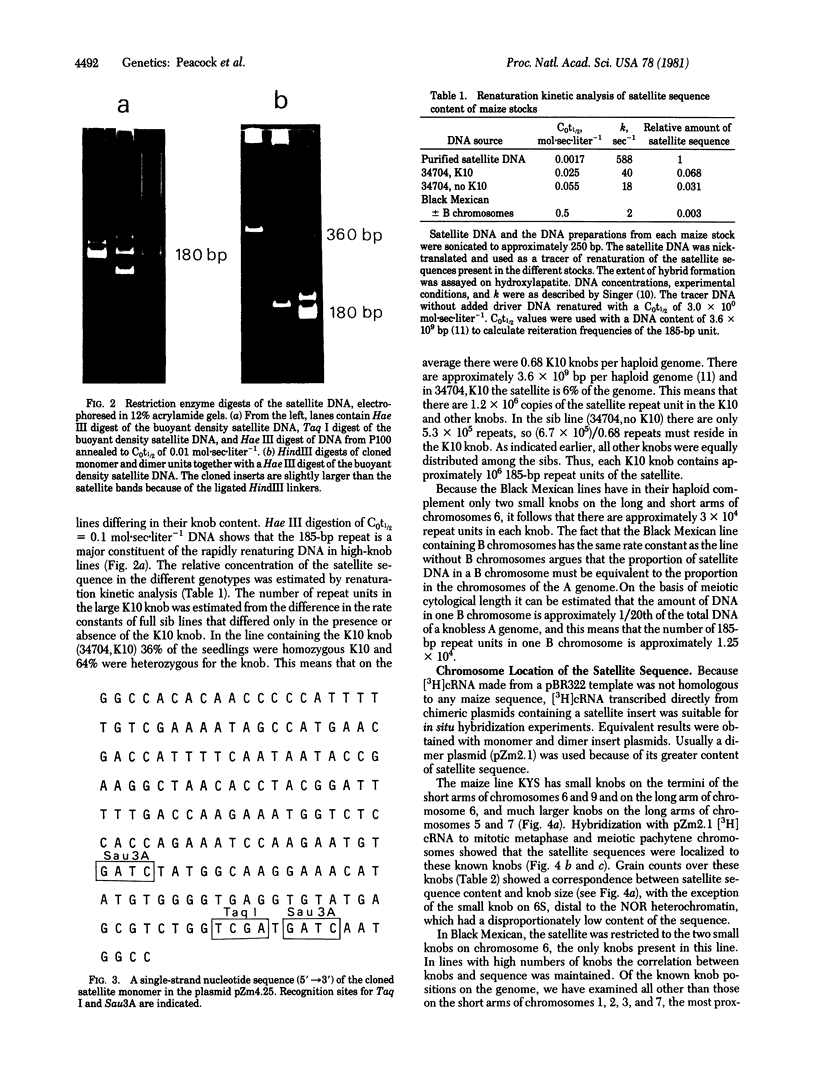
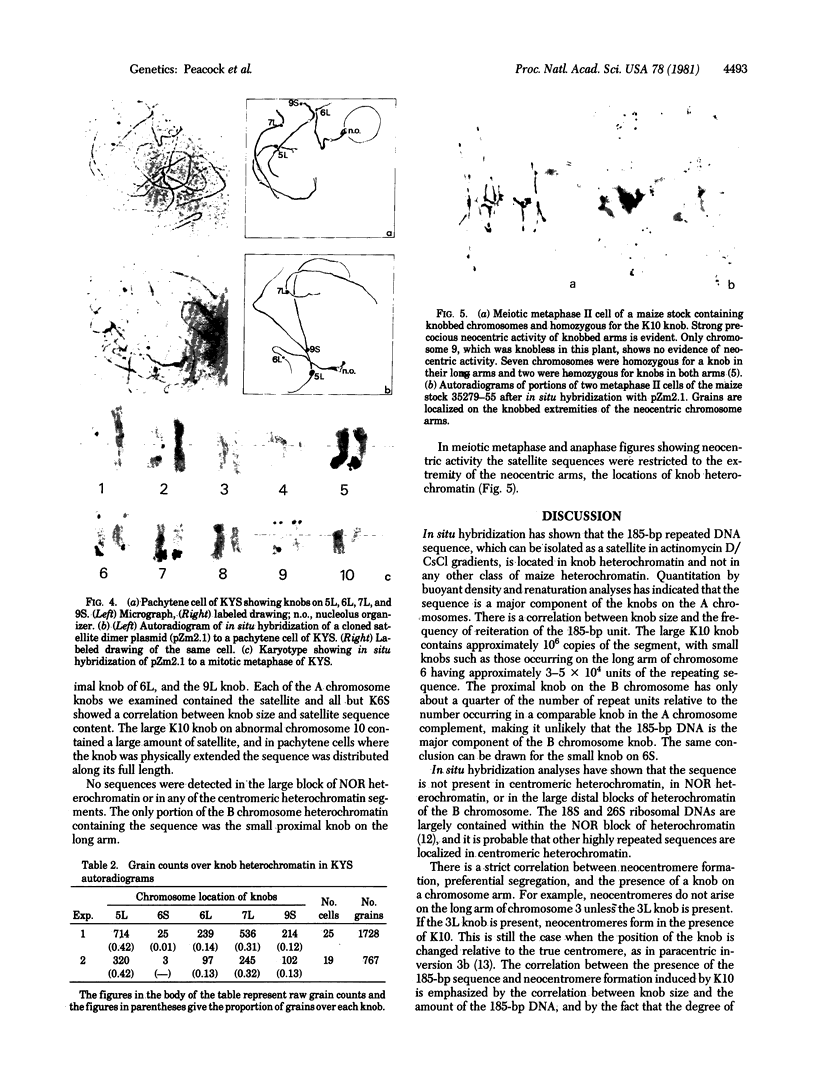
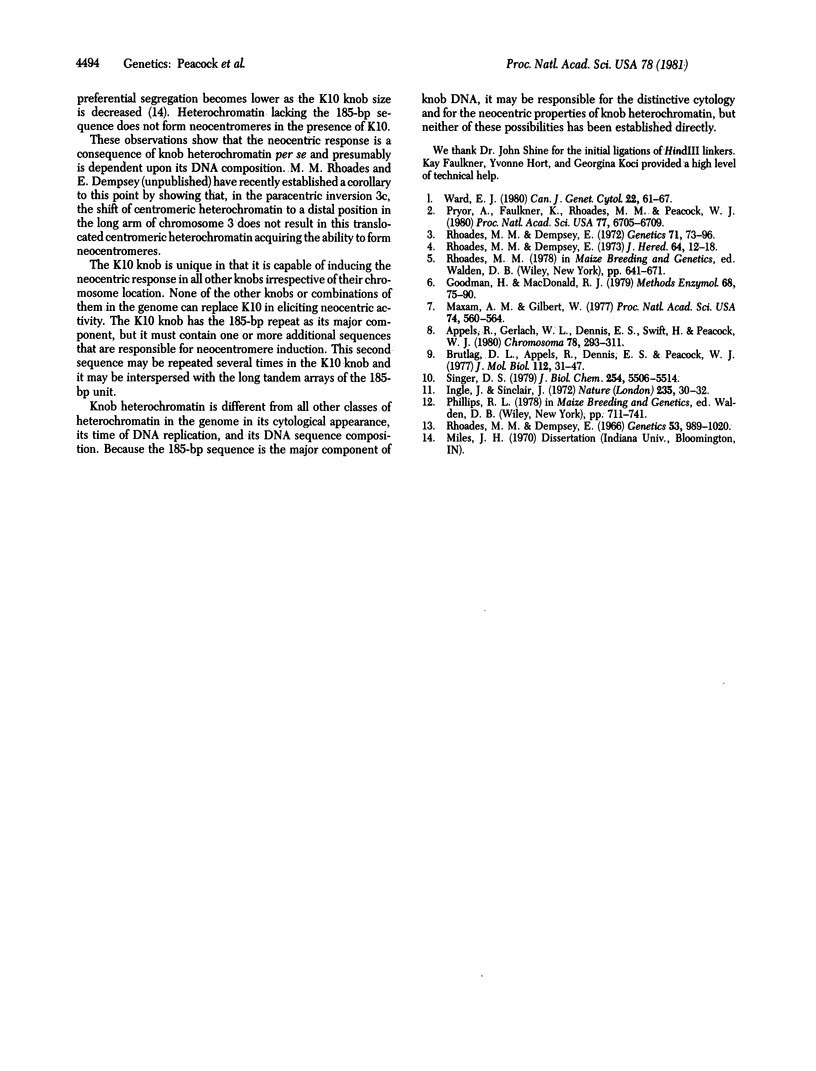
Images in this article
Selected References
These references are in PubMed. This may not be the complete list of references from this article.
- Brutlag D., Appels R., Dennis E. S., Peacock W. J. Highly repeated DNA in Drosophila melanogaster. J Mol Biol. 1977 May 5;112(1):31–47. doi: 10.1016/s0022-2836(77)80154-x. [DOI] [PubMed] [Google Scholar]
- Goodman H. M., MacDonald R. J. Cloning of hormone genes from a mixture of cDNA molecules. Methods Enzymol. 1979;68:75–90. doi: 10.1016/0076-6879(79)68007-2. [DOI] [PubMed] [Google Scholar]
- Ingle J., Sinclair J. Ribosomal RNA genes and plant development. Nature. 1972 Jan 7;235(5332):30–32. doi: 10.1038/235030a0. [DOI] [PubMed] [Google Scholar]
- Maxam A. M., Gilbert W. A new method for sequencing DNA. Proc Natl Acad Sci U S A. 1977 Feb;74(2):560–564. doi: 10.1073/pnas.74.2.560. [DOI] [PMC free article] [PubMed] [Google Scholar]
- Pryor A., Faulkner K., Rhoades M. M., Peacock W. J. Asynchronous replication of heterochromatin in maize. Proc Natl Acad Sci U S A. 1980 Nov;77(11):6705–6709. doi: 10.1073/pnas.77.11.6705. [DOI] [PMC free article] [PubMed] [Google Scholar]
- Rhoades M. M., Dempsey E. On the mechanism of chromatin loss induced by the B chromosome of maize. Genetics. 1972 May;71(1):73–96. doi: 10.1093/genetics/71.1.73. [DOI] [PMC free article] [PubMed] [Google Scholar]
- Rhoades M. M., Dempsey E. The Effect of Abnormal Chromosome 10 on Preferential Segregation and Crossing over in Maize. Genetics. 1966 May;53(5):989–1020. doi: 10.1093/genetics/53.5.989. [DOI] [PMC free article] [PubMed] [Google Scholar]
- Singer D. S. Arrangement of a highly repeated DNA sequence in the genome and chromatin of the African green monkey. J Biol Chem. 1979 Jun 25;254(12):5506–5514. [PubMed] [Google Scholar]



